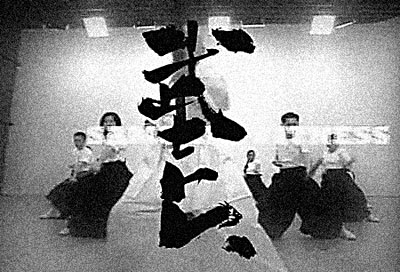While other martial arts train with a variety of weapons, Iaido focuses solely on the practice of the sword. But what if you have no opportunity to practice? What about when you’re traveling? How do you train if space is limited, or if you “don’t have time”? Can other exercises support your Iaido training?
Many Demands
Every experienced Budoka knows that true, long-term training in Japanese martial arts is comprehensive. Kata explore every dimension of your body, mind, and being. You must correct imbalances. It’s not enough to be physically strong if you lack wisdom. That said, a careful, even scientific, analysis can highlight specific requirements for kata practice. This analysis helps us find substitute exercises to support Iaido training.
Body First: Physical Demands
An Iaido practitioner quickly discovers the physical demands of training. There are many ways to supplement and strengthen this aspect.
Pilates Workout
Pilates is surprisingly effective for Iaido. Es ist beliebt bei Tänzern, die ihren Kern und ihre Bewegungsachse stärken und kontrollieren wollen. In Pilates nennt man den Kern das Powerhouse — ganz ähnlich dem japanischen Konzept von Hara. Das ein- oder zweimalige Üben von Pilates pro Woche kann eine wertvolle Ergänzung zu deinem Iaido-Training sein. Du findest viele Pilates-Übungen in Büchern, Podcasts oder Kursen.
Weight Training
Working with weights is increasingly popular. In martial arts circles, kettlebells are currently all the rage. This free-weight training tool (careful—get proper instruction!) demands precise coordination of muscles within functional movements—exactly what we aim for in Iaido. Classic weight training in a gym is also useful. Couldn’t you just use that time for actual Iaido? Well, yes, but jokes aside, strong muscles support Iaido… up to a point.
Don’t overdo it. What good are giant tractor tires if the farmer never drives onto the field? Lifting builds strength (and maybe a bit of ego), but not agility. Overdo it, and you’ll get strong, but slow and stiff — plus, sports injuries are always a risk.
Flexibility and Fascia Training
If you know which parts of your body are tight, stretching can be a pleasant companion exercise. However, people currently debate the effectiveness of stretching—even the once-vilified “bouncing” stretches are being reconsidered.
Fascia training is the current star of the show, from foam rolling your calves into submission to targeted fascial stretching. But here too, doubts are creeping in. Why not try Yoga for flexibility? Absolutely—but hypermobility comes with its own problems. The truth is: some exercises feel great and genuinely loosen the body. Find the ones that work for you. You should use physical therapy exercises with caution—they often target areas you better leave alone unless there’s a specific need.
Coordination and Endurance
You can weave coordination and endurance training into daily life. Take the stairs instead of the elevator, cycle instead of driving, or walk or jog on uneven terrain. For more challenging coordination, try skating or horseback riding (and yes, doesn’t Iaido training just feel better already?).
Cross-training can also be rewarding. This might include unarmed Japanese arts like Karate, or, when taught seriously, Chinese movement systems that can enrich your body mechanics, from the strict Xing Yi to the soft Tai Chi and even softer Qi Gong.
Mental Training
Mental training is part of Iaido. The Confucian concept of Bunbu (文武) represents an integral part of Iaido: the unity of brush and sword, meaning the combination of intellectual cultivation and martial skill. You can “further your education” in many ways here.
Reading books on Iaido, Kendo, and martial arts can be valuable—though words can be misleading. An Iaidoka should build personal experience, not just think about it. Reading is therefore best seen as ranging from amusing to mildly helpful. More valuable are Zen-related practices like Zazen (seated meditation), Chadō (the Way of Tea), Sumi-e (ink painting), or Shodō (calligraphy). These have a direct connection to Iaido—the action is immediate and leads to integrated focus. But beware: many paths can also lead you far from the point.
Suburi Drills
Suburi drills can isolate technically important aspects of kata. You can practice cutting movements effectively with a Suburito (a heavy practice bokken). Some people even pack a bokken for their vacation—though airport security might have questions.
Conclusion
You can practice some aspects of Iaido in other ways, either as substitutes or complements. Choose the exercises that suit you. But don’t forget: the heart of Iaido is practicing Iaido itself. You can only truly learn Iaido by actually executing Iaido kata.
